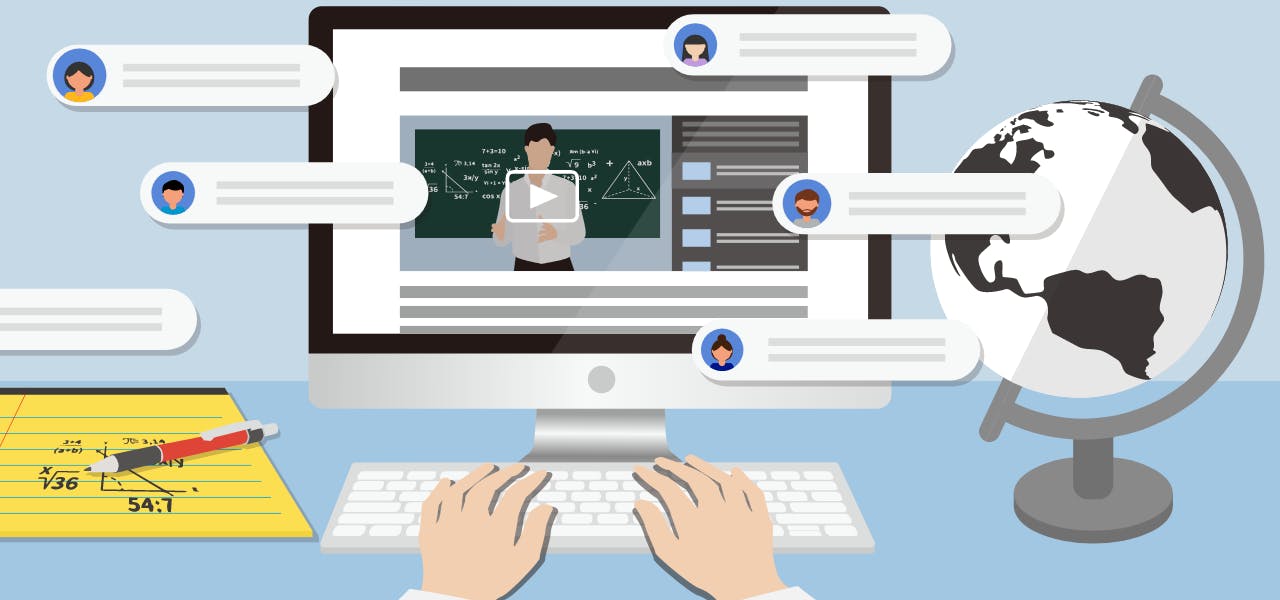Up until recently, people knew exactly what it would take to get further education. They needed to enroll in a local college or find a university and take courses. But those traditional avenues of knowledge have changed with the Digital Era and the immersion of MOOCs into the scene.
MOOCs, or Massive Open Online Courses, are revamping how people approach continuing education today.
In a MOOC, universities and other legitimate platforms offer institutional-based courses to the general public. The problem is that even though millions of people sign up for these informative lessons, very few actually complete them. The only benefit to a MOOC typically is enhanced knowledge for the student, but these courses are changing the greater framework of digital study and must be understood further to use them effectively.
What Are MOOCs?
With the trend towards collaboration and distance learning only increasing, MOOCs were originally designed to help answer the problems stemming from this shift in education. As a way that students could learn and engage with other students, the MOOC environment was advantageous. In the original MOOCs, instructors were connected to students through forums, platforms, blogs, and live chats. The syllabus was tentative and at their own pace through self-guided learning peppered with on-demand lectures and exams at pre-set milestones.
Instructors had the job of creating resources for the students to access, but the students had the lion’s share of the work through learning from a distance on their own. With so much online information that was accessible, though, the intention was for it to be simple for students to select a path that was tailored to their own learning style. Typically, MOOCs are set up in twelve-week courses interspersed with peer learning opportunities and assessments.
The popularity of these original frameworks meant that e-learning platforms had to be further developed, creating roles for individual teachers and academic experts to have more work and training facilities to be involved in developing instructional modules to guide students in how to advantageously use their MOOC courses.
The Benefits of Online Courses
The pandemic of COVID-19 has made it clear that online courses are integral to the future of academics. Through personal learning environments or PLEs, students can connect in groups over academic platforms in ways that help form their individual knowledge. PLEs are considered today to be the preferred method of learning for many students because they are able to learn better when they can choose their own educational resources and learning approaches versus having a one-size-fits-all method of informing and disseminating knowledge to a group.
MOOCs take this online coursework and condense it into more attractive formats. The typical class averages about six to eight hours each week, including the lessons, homework assignments, and exams. Rather than require students to submit lengthy papers, MOOCs offer multiple choice assignments and tests with instant, computer-graded feedback. Although this is great for the student, it doesn’t allow for oversight from the instructors, which is why many institutions offer the course but not the credit or a final grade.
Other institutions, though, allow for peer assessment of the coursework instead of computer-generated grading and feedback. Upgrades are available for those searching for college credits provided they meet a minimum requirement set forth by the institution.
Out of the millions of people who sign of for MOOCs each year, though, only about ten percent actually complete their courses.
How MOOCs are Changing the Academic World
As these forms of knowledge dissemination become more widely known, it’s apparent that they aren’t for everyone. But they do have their niche of people who are benefitting from them, regardless of those who don’t complete their work and those who are skeptical of the format entirely.
Surveys and research have shown that of those who do complete the courses, nearly ¾ of them report that they benefitted from career growth and/or improved knowledge. Many of these students live in developing countries where anyone with a low socioeconomic status has less access to education. MOOCs are the perfect way for them to get the knowledge of education, even if they don’t obtain credits towards a degree.
Using Impactio to Make a Change
Researchers have been studying social initiatives in developing countries for years, and MOOCs are one way to analyze the effect of how these are working. If this type of research appeals to you, it’s important to get the data you’ve collected in front of your peers or an organization that focuses on driving change. To do so, you need one program that does everything you need, like Impactio.
MOOCs and other academic evolutions are affecting societies in developing countries and other academic avenues and need more understanding to be successful. With Impactio, you can easily produce output that demonstrates your data and then be back on your way to making a difference in the world through academics.
